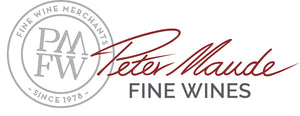
Peter Maude Fine Wines
2021, Château Larcis Ducasse, SAINT-ÉMILION, 1er Grand Cru Classé 'B'
Bordeaux Blend: Cabernet Franc, Cabernet Sauvignon, Merlot.
This 10 hectare property is situated close to Pavie on the best south-facing slope in Saint Emilion. In 2002 Nicolas Thienpont and Stéphane Derenoncourt, of neighbouring Pavie Macquin, took control of both the vineyard and the winemaking. The wines here are impressively concentrated in style. Farr Vintners, London.
A blend of 86% Merlot and 14% Cabernet Franc, the 2021 Larcis Ducasse wafts from the glass with aromas of cherries, blackberries, violets, warm spices and forest floor. Medium to full-bodied, deep and attractively layered, with lively acids and a chalky, saline finish, this is a terrific effort. Nicolas Thienpont and his team were extremely selective this year, and the grand vin derives almost entirely from the slope, without much contribution from the plateau above. 92-94 William Kelley, Wine Advocate.
This is medium-to full-bodied with firm, silky tannins. Already has an expressive nose of blackcurrants, blackberries, white pepper, cloves and black liquorice. Salty minerality. Fresh and fine. Spicy finish. Lengthy, too. 94-95 James Suckling.
The 2021 Larcis Ducasse has an almost gentle, atypically understated bouquet with brambly red fruit, wilted rose petal and light undergrowth scents. The palate is linear and structured, far removed from the occasionally opulent Larcis Ducasse of warming seasons. Quite saline in the mouth, this is distinguished by a liberal sprinkling of cracked black and Spanish Padron pepper towards the finely persistent finish. Classy and full of character. 91-93 Neal Martin.
Not giving too much away yet but there are layers here, and plump if restrained fruit, lots of white pepper, blueberry, blackcurrant. We are still in sculpted, subdued territory, but this is luscious and finessed and has all the elements to plump out over ageing. Clear salinity, oyster shell and crushed rocks. To achieve this, they chose not to use their plots right on the austere limestone plateau, but selected from the richer clay 'molasses de fronsadais' on the slopes, and also not from the sandier areas at the bottom of the slopes. Tasted three times, excellent quality. 94 Jane Anson.
